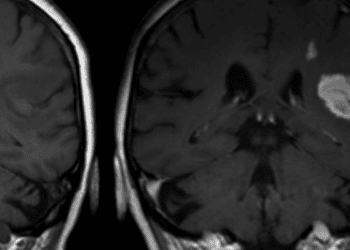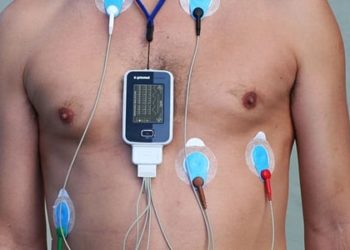2 Minute Medicine Rewind April 15, 2024
1. Family physicians in Ontario with the largest proportion of unvaccinated patients were more likely share certain demographic characteristics, such as older age and male gender.
Evidence Rating Level: 2 (Good)
Family doctors are influential regarding vaccine uptake among their patients. Researchers aimed to assess whether characteristics of primary care practitioners influenced the proportion of their patients unvaccinated against SARS-CoV-2. In this population-based, cross-sectional cohort study conducted in Ontario, Canada, researchers ranked family physicians according to the proportion of their patients who were unvaccinated. The authors compared the characteristics of family doctors with 10% vs 90% of their patients unvaccinated. 9060 family physicians were included in this study. The family doctors who with the largest proportion of unvaccinated patients were more likely to be older, male, to have trained outside of the country, and to work in an enhanced fee-for-service model. The patients in this cohort were more likely to be younger, live in areas with greater ethnic diversity, and to have lower incomes. This study identifies populations of physicians and patients in Ontario who are more likely to have poor vaccine uptake, which may be helpful for future targeted public health interventions. A limitation of this study is the cross-sectional nature, which does not account for changes in trends over time.
Depression Onset After a Spouse’s Cardiovascular Event
1. Among working-age adults in Japan, a spouse’s onset of CVD was associated with a greater risk of developing depression.
Evidence Rating Level: 2 (Good)
In 2019, depression was ranked 13th among the top causes of disability-adjusted life years globally. Cardiovascular disease (CVD) is a known risk factor for depression, though little is known about the impact a spouse’s CVD has on an individual’s mental health. This cohort study included 277,142 married couples from the Japan Health Insurance Association program, which includes about 40% of the working-age population in Japan. Data were collected between April 2015 and March 2022. Those whose spouses experienced CVD were matched 1:1 to control subjects whose spouses did not experience CVD. During the study period, new-onset depression was documented for 1.8% of the participants. There was an association found between a spouse’s CVD and risk of developing depression, (hazard ratio, 1.13 [95% CI, 1.07-1.20]). A limitation of this study is that the researchers lacked information on household socioeconomic status and lifestyle behaviors, which indicates that the results could be influenced by confounding variables that were not adjusted for. Overall, this study demonstrates that a spouse’s onset of CVD is associated with a greater risk of developing depression. Clinicians may consider implementing measures to help those whose spouses develop CVD prevent experiences of depression.
Semaglutide vs Endoscopic Sleeve Gastroplasty for Weight Loss
1. Endoscopic sleeve gastroplasty was more cost-saving compared to semaglutide for the treatment of class II obesity in this economic evaluation study.
Evidence Rating Level: 2 (Good)
The prevalence of obesity is increasing in the United States. This trend has been associated with greater annual healthcare spending. Two interventions, endoscopic sleeve gastroplasty (ESG) and glucagon-like peptide-1 (GLP-1) receptor agonists (eg, semaglutide), are commonly used for weight loss. Researchers aimed to compare the cost-effectiveness of these two weight loss interventions among individuals in the United States with class II obesity (body mass index [BMI] of 35-39.9). The main outcomes included cost in 2022 USD, quality-adjusted life-years (QALYs), and incremental cost-effectiveness ratio (ICER). Using a Markov cohort model, researchers determined that ESG was more cost-effective than semaglutide over a 5-year period, with an ICER of –$595 532/QALY. Compared to semaglutide, ESG increased quality-adjusted life years by 0.06 and decreased total cost by $33,583. In addition, ESG was associated with greater weight loss at 5 years compared to semaglutide (BMI of 31.7 vs 33.0). Choosing ESG over semaglutide for the treatment of class II obesity may help reduce some of the economic burden that is expected from the increased use of semaglutide for weight loss. A limitation of this study is that relatively short-term data was used to compare both strategies and cost-effectiveness may be different in the longer term. Overall, this study demonstrates that ESG is more cost-effective than semaglutide for the treatment of class II obesity.
Glucagon-like peptide 1 receptor agonist use and risk of thyroid cancer: Scandinavian cohort study
1. Glucagon-like peptide 1 (GLP-1) receptor agonist treatment was not associated with increased risk of thyroid cancer compared to dipeptidyl peptidase 4 (DPP4) inhibitors.
Evidence Rating Level: 2 (Good)
The use of GLP-1 receptor agonists is contraindicated for patients with a personal or family history of thyroid cancer or multiple endocrine neoplasia type 2. Previous studies have indicated a potential association between these medications and thyroid cancer. The European Medicines Agency published a report in 2023, which concluded that the current evidence did not support a casual relationship between GLP-1 receptor agonists and thyroid cancer. In the current study, researchers aimed to determine whether the use of these medications is associated with greater risk of thyroid cancer. The authors compared the incidence of thyroid cancer among adults taking GLP-1 receptor aggonists with those taking dipeptidyl peptidase 4 (DPP4) inhibitors, as well as an additional analysis including patients who started sodium-glucose cotransporter 2 (SGLT2) inhibitor treatment. This cohort study was conducted in Denmark, Norway, and Sweden between 2007 and 2021. Thyroid cancer diagnoses were identified from nationwide cancer registries. 76 of 145 410 patients taking GLP-1 receptor agonists and 184 of 291 667 patients taking DPP4 inhibitors developed thyroid cancer during the study period. The use of GLP-1 agonists was not associated with increased risk of thyroid cancer (hazard ratio, 0.93; 95% confidence interval, 0.66 to 1.31). A limitation of this study is that the mean follow-up period was inly 3.9 years for GLP-1 receptor agonist users, which may not be long enough to identify long-term malignancy risk. Overall, in this study, GLP-1 receptor agonist treatment was not associated with increased risk of thyroid cancer.
1. Videoconference-delivered cognitive therapy, mindfullness meditation, and behavioral activation were all effective modalities for the treatment of chronic low back pain at 0, 3, and 6 months.
Evidence Rating Level: 3 (Average)
Chronic low back pain is commonly managed with three main techniques: cognitive therapy, mindfulness medidation, and behavioral activation. In this secondary analysis of a three-arm, randomized clinical trial, researchers aimed to assess the effectiveness of these three therapies at different time points, immediately after treatment, at 3 months, and at 6 months. 392 adults with chronic low back pain were included in the study. These participants were randomized to receive one of the three treatment modalities via videoconference. Reductions in pain interference were found with all three treatments (ds from − .71 to − 1.00), which were maintained at the two follow-up time points. A limitation of this study is the lack of a control group to compare the treatment groups to, as it is possible that all three groups would have improved with time regardless of the treatment received. Overall, this study demonstrates that videoconference-delivered CT, BA, and MM are effective modalities for the treatment of chronic low back pain.
©2024 2 Minute Medicine, Inc. All rights reserved. No works may be reproduced without expressed written consent from 2 Minute Medicine, Inc. Inquire about licensing here. No article should be construed as medical advice and is not intended as such by the authors or by 2 Minute Medicine, Inc.







